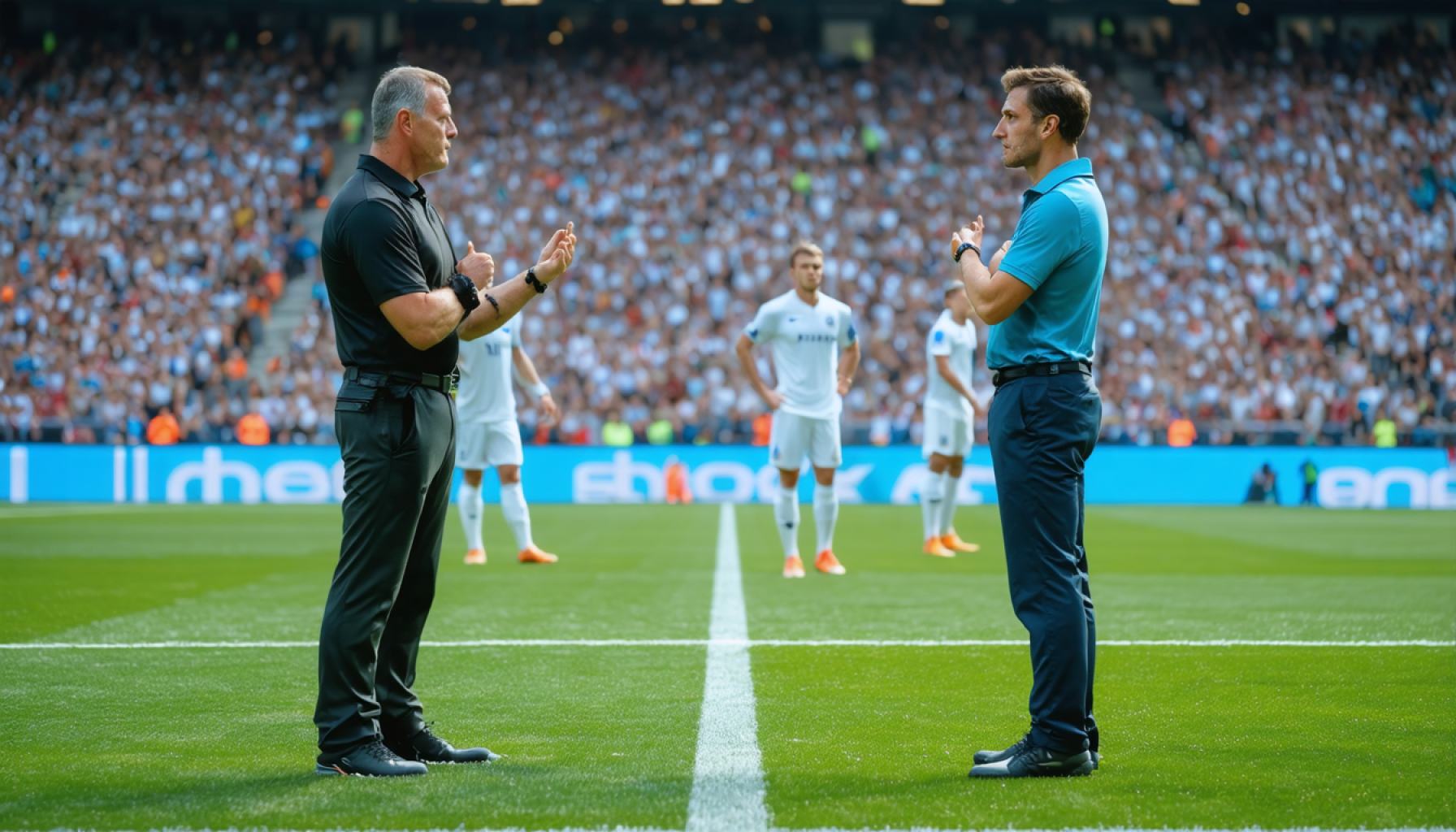- Referees in sports are critical, yet human errors often lead to controversial calls and fan dissatisfaction.
- The NBA faced a significant scandal with Tim Donaghy, highlighting ongoing issues with officiating integrity.
- In 2023, over 25% of NBA players cited officiating as a primary concern, reflecting widespread demand for unbiased judgments.
- Technological advances, such as AI and high-tech systems, aim to provide clarity and fairness in officiating decisions.
- Sports like soccer, cricket, and tennis successfully use technologies like goal-line and Hawk-eye systems for accurate calls.
- AI’s potential in monitoring game elements, such as out-of-bounds decisions, suggests a future of improved decision-making.
- The goal is not to replace referees but to create a partnership that enhances fairness while preserving the sport’s human touch.
Under the stadium lights, tensions rise in the culminating moments of a tight game. Fans clutch their seats while athletes push boundaries, each play a dance of strategy and chance. Yet, when a whistle pierces the air, it isn’t always to the applause of fair play. Controversial calls, often cloaked in subjectivity, paint the vibrant canvas of sports with controversy. Could the future hold a more impartial arbiter?
Referees: formidable sentinels of the field. Eyes dart across the expanse, a constant mental juggling act of players, rules, and real-time decisions. But they’re human, fallible under pressure’s weight. Like a traveler navigating a shadowed forest, they sometimes stray into error, sparking ire among spectators.
Imagine this: The NBA shocked by Tim Donaghy’s scandal, where his actions wove threads of doubt into the very fabric of the game. This wasn’t just about a bad call; it questioned the integrity of a beloved institution. Nearly two decades later, the league still grapples with resolving inconsistencies, with over 25% of players in 2023 pointing to officiating as its biggest flaw. Fans, armed with high-definition scrutiny from their living rooms, demand justice in judgment.
Enter technology — a tool promising clarity amid chaos. In sports arenas, technology could transform the subjective into the objective. Visualize AI and high-tech systems democratizing the decision-making process, all while maintaining the pace and flow of the game. Soccer’s use of goal-line technology has begun to bridge this gap, its precision ensuring every call is accurate. Cricket and tennis benefit similarly from Hawk-eye systems, adjudicating pivotal moments with mathematical precision.
As the digital eye sharpens its focus, new horizons beckon. AI systems could redefine out-of-bounds decisions or dissect whether a basketball left the hand before time expires. In every corner of the sports spectrum, AI’s fingerprints are faint but growing, extending into player tracking and thematic judgments.
Yet, the narrative isn’t one of replacement but symbiosis. Human referees offer nuance, capturing sportsmanship’s essence beyond rules’ rigidity. Their judgments, often shaped by understanding and emotion, balance structured play with the unpredictable nature of competition. AI, in its purest form, lacks this intuition, needing constraint lest it reduces every play to a whistle-worthy infraction.
Let AI serve as a vigilant ally. By shouldering some of the burden, it can lend referees clarity in the face of ambiguity. With tech by their side, referees, released from the shackles of human error, could forge a new era of equitable sportsmanship. Here lies the heart of the message: not to replace but to enhance, ensuring the true spirit of sport shines brightest. Through this blend of tradition and innovation, we can protect the sanctity of the games we love.
Revolutionizing Sports Officiating: The Hybrid Role of AI and Human Referees
Utilizing Technology in Sports Officiating: Current Solutions and Future Prospects
The Role of Technology in Sports
As the landscape of sports continues to evolve, integrating technologies like AI and machine learning has become imperative. Hawk-Eye technology, used extensively in tennis and cricket, provides line calls with pinpoint accuracy. Similarly, Goal-line technology in soccer offers real-time, reliable verdicts that leave no room for human error.
How AI Can Assist Referees
1. Real-Time Analysis: Algorithms can provide instant analysis of complex plays, offering deliberations that would typically take human eyes much longer.
2. Decision-Making Support: AI can offer objective insights to referees, allowing them to make informed decisions under pressure.
3. Post-Game Analysis: Provide detailed reviews of referee decisions and game dynamics, which can be used as learning tools for future games.
AI in Sports: Real-World Use Cases
– Basketball: AI can track player movements, aiding in determining fouls and infractions with greater accuracy.
– Football: VAR (Video Assistant Referee) systems have been pivotal in judging offsides and other major incidents.
– Athletics: Time sensors and cameras ensure accurate race starts and finishes.
Controversies & Limitations
– Human Intuition vs. Precision: AI lacks the intuition of a human referee, who can interpret the nuances of player conduct and sportsmanship.
– Technical Failures: Reliance on tech raises the stakes should systems malfunction or provide inaccurate data.
Market Trends
– The sports technology market is projected to grow significantly, incorporating AI and machine learning, transforming not just officiating but player analytics and audience engagement. MarketsandMarkets predicted growth from $8.9 billion in 2018 to $31.5 billion by 2024.
Balancing AI and Human Input
The key to harmonious integration is not to let technology overshadow the human element, but to foster a symbiotic relationship between them. Technologies should be seen as tools that enhance the objectivity and consistency of human referees, rather than replacements.
Actionable Recommendations for Sports Organizations
1. Invest in Hybrid Systems: Combine AI technology with seasoned human referees to achieve the best results.
2. Training Programs: Equip referees with skills to effectively utilize technology amid real-time decision-making.
3. Pilot Programs: Implement AI on a smaller scale before deploying it fully, observing efficacy and public response.
4. Continuous Feedback Loop: Use data collected from matches to continuously improve AI systems.
By embracing this balanced approach, sports organizations can uphold the integrity, excitement, and fairness that fans cherish. For more information on how technology is shaping various industries, explore Microsoft.
